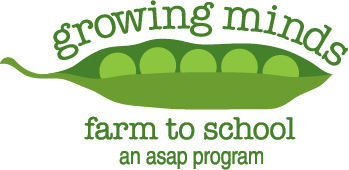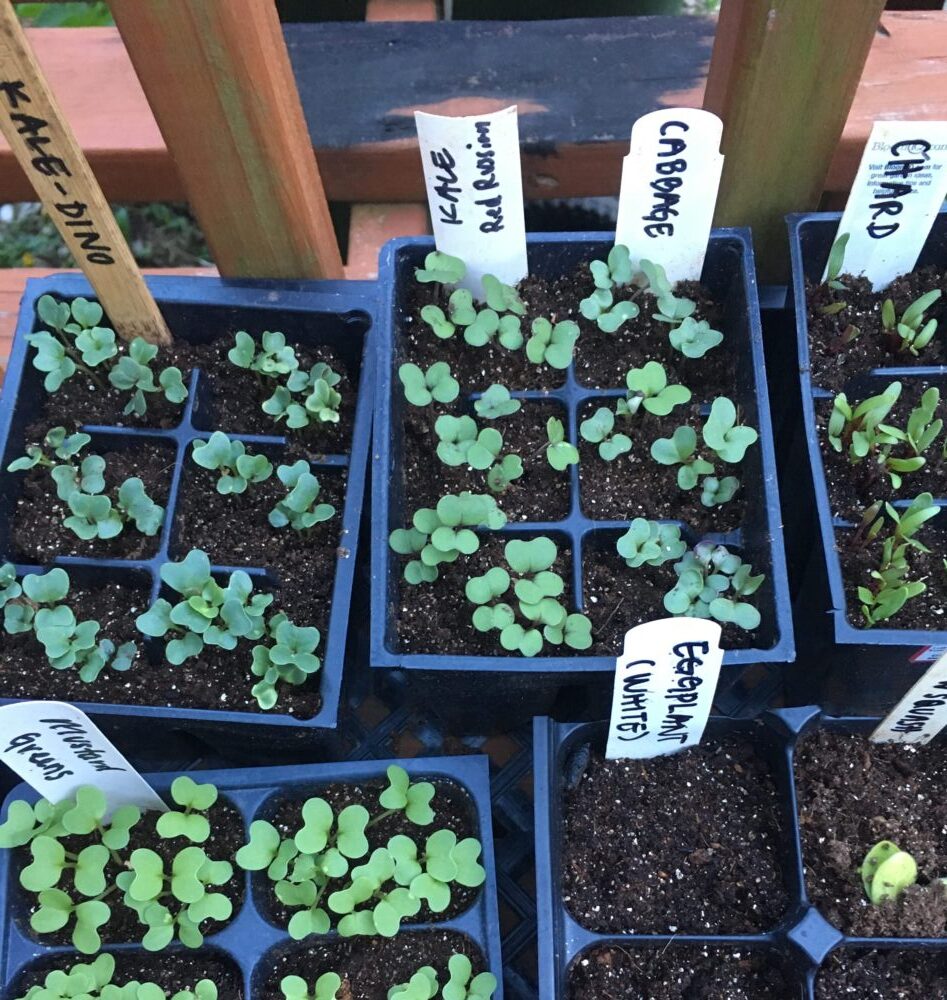This week’s theme is seed starting. Our “Growing Minds Day by Day” educational resource lists are designed for families and educators.
Growing Minds Day by Day
Seed Starting
Books:
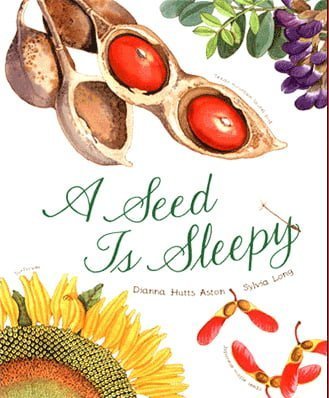
A Seed is Sleepy
By Dianna Hutts Aston
A seed is sleepy, but after a nice long nap, some sun, and a snack it is ready to grow into something magnificent! Watch a read aloud on YouTube.

A Fruit is a Suitcase for Seeds
By Jean Richards
Ever wonder why a tomato is actually a fruit? This book explains exactly what a fruit is in simple terms that young children can understand. Watch a read aloud on YouTube.
Find more books
Visit the Growing Minds’ farm to school literature database and use the search bar to discover more of our favorite children’s books. Educators in the Asheville area can also check out books from our lending library.
Local Food Recipe:
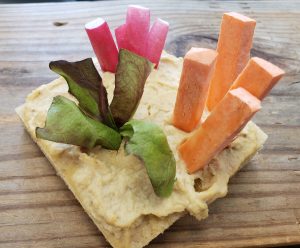
Starting to plan your spring garden? Garden plot crackers are a fun and simple recipe that will help get kids’ creative juices flowing. Each child can design their own “garden plot” snack using seasonal local veggies.
Garden Plot Crackers
Ingredients:
- A variety of vegetables, at least one locally grown (radishes, turnips, beets, dark leafy greens, salad mix, apples, and winter squash are good local produce choices in the midst of winter)
- Slices of bread of large crackers
- Spreadable cream cheese, goat cheese, or hummus
Directions:
- Cut the vegetables into small pieces and set aside.
- Spread about a tablespoon of cheese of hummus on top of the slice of bread or cracker.
- Design your garden plot by putting pieces of vegetables on top. Enjoy!
Want to make this recipe with a class? Our Garden Plot Cracker Lesson Plan is scaled for a class of 20 children and includes curriculum connections plus tips for cooking with kids.
Educational Resources:
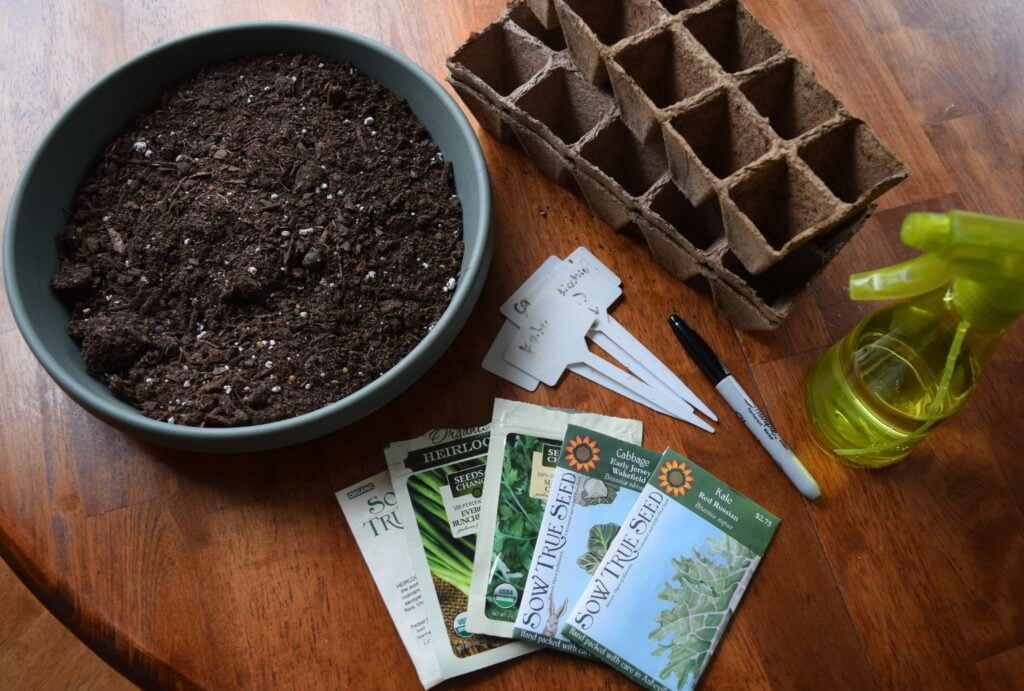
Basic Seed Sowing Steps:
- Find some trays or pots, or use recycled materials like a paper egg carton, or plastic yogurt or take-out containers (just poke some holes in the bottom for drainage).
- Fill the seed trays/pots with seed starter soil mix or potting mix.
- Moisten the surface of the soil.
- Plant a few seeds of the same variety in each pot (refer to the seed packet for instructions on how deep to plant each variety in the soil.)
- Be sure to label each pot with the type of plant and date you planted the seeds–popsicle sticks make great labels!
- Place the seed tray or pots in a warm, sunny place.
- Check your seeds daily and water them gently each time the soil starts to feel dry.
- Once your seedlings have a few leaves and are getting too big for their small pots, gently remove the seedlings (leaving their soil intact) from their pots and transplant them to bigger pots or garden beds.
- Don’t forget to check your seed packets for instructions on how far apart to space your seedlings when transplanting them. Plants that are placed too close together will compete for sunlight and nutrients and may not grow to their full size.
- Continue to water your plants every few days (or whenever the soil feels dry to the touch).
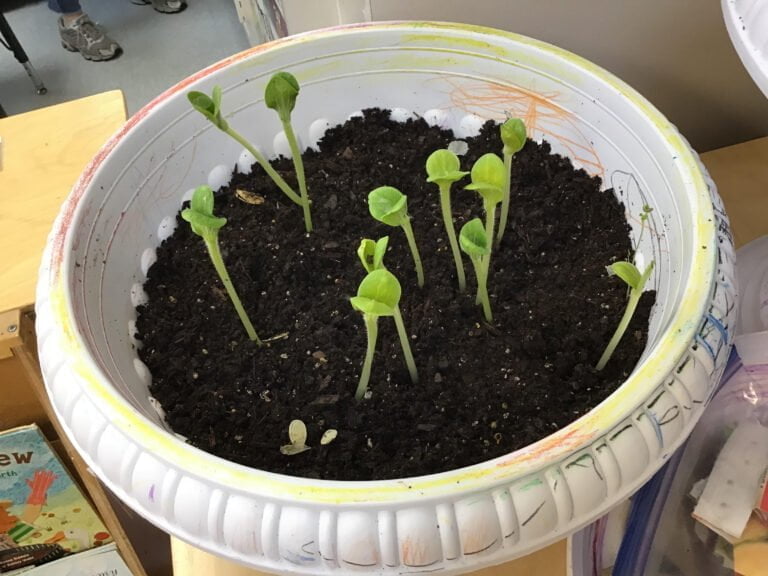
Growing Minds Lesson Plans
- Seed Exploration (preschool): Children learn about seeds through hands-on activities, inquiry, and seed exploration.
- What Plants Need (preschool): Children will become familiar with the different things plants need to survive and grow. Children will learn to listen and participate in a group activity while outdoors in the garden through this movement based activity.
- Seed Tapes (K-2): Students will learn proper spacing for planting in the garden.
- Seed Starting (K-2): Students will observe germination of different types of seeds and learn how to transplant seedlings into soil.
- Planting in the Garden (K-2): Students choose what to grow, how to grow it, and when to plant a garden. This lesson plan is written with a fall garden in mind, but could also be used to plan a spring garden.
- Garden Planning (K-2): Students learn what people need to create a successful a garden and what plants need to thrive. Through a hands-on activity, students learn about mapping and construct a “bird’s-eye-view” picture of a garden bed. Through a reflection process, students work together to make group decisions in planning a classroom garden.
- Planting Starts (3rd grade): Students discuss warm and cool season plants, as well as which plants might need a “head start” inside. Students plant seeds in six pack containers and make predictions. This lesson plan is correlated for third grade but can be modified for other grades as well.
- February Resources: Explore additional lesson plans, local food recipes, children’s books, and This Week in the Garden activity guides.
Activities:
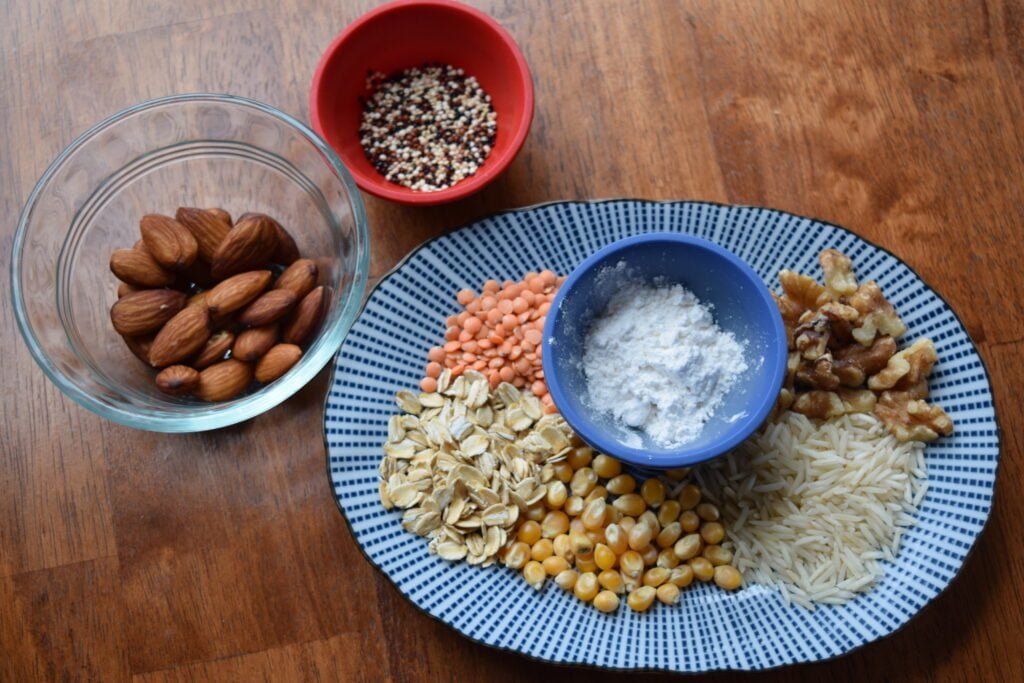
The Seeds We Eat
- Ask children to brainstorm a list of foods people eat that come from seeds–there are hundreds of types, including almonds, walnuts, beans, peas, rice, wheat, corn, coconut, sesame seeds, sunflower, and pumpkin seeds. Do your kids have a favorite seed to eat?
- Go on a seed scavenger hunt in your kitchen. How many edible seeds can you find there? Keep in mind, some foods that come from seeds (like wheat flour or shredded coconut) might not look like seeds anymore once they’ve been processed.
- Keep a log of what kinds of plant parts you eat for a day. Did you eat more leaves, roots, stems, or seeds?
Make Seed Balls
Winter is a great time to make seed balls to plant in the late winter or early spring. You can also give them to friends and family for gifts. Use three parts clay to one part potting soil or compost. Ask children to pick a seed of their choice to add into the mixture. Milkweed, wildflower, and sunflower seeds work well. (Milkweed attracts butterflies and is the only plant that Monarchs lay their eggs on). These seed balls do not need watering or to be broken apart; they just need to be thrown in the yard somewhere sunny. Visit NASA’s Climate Kids website to find more tips for making seed balls.
Tips for Planting a Spring Garden:
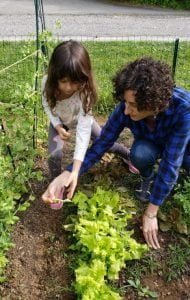
In spite of the cold temperatures and frozen ground, February is the perfect time to plan your spring garden. If you’re not sure how to get started, follow the tips below. You can always reach out to us at growingminds@nullasapconnections.org with your gardening questions.
Plan your garden
Having an idea of where your garden will be located and how large it will be will help you decide what plants to grow in it. Do you want to plant an in-ground garden in the yard, a container garden, or a combination of both?
Make sure to include children when planning your garden. What vegetables would they like to grow and cook with? The Growing Minds website features several lesson plans that can help you and your children or students start a garden. Our Garden Planning lesson can help your family imagine various garden types and designs, then decide on what you want to grow. Not sure what kind of garden to plant? Consider planting a Literacy Bed that incorporates plants and objects from one of your child’s favorite books, or make a plan for a “pizza garden” featuring your favorite pizza ingredients, like tomatoes, bell peppers, and basil.
If you’re not sure what to grow, review this Plant List for Pre-K Classrooms for inspiration. Let each person select one or two vegetables, or take a vote for each veggie and plant the ones with the most votes. You can look at seed selections from various businesses online or look through seed catalogs. Call any seed company to request a seed catalog. A few great seed companies are: Johnny’s Select Seed: 1-877-564-6697, Territorial Seed: 1-800-626-0866, or Sow True Seed (based in Asheville): 828-254-0708
If you want to try planting slow-growing warm weather crops (ex. tomatoes, peppers, eggplant) from seed, you’ll need to get a jump start on their growing season by starting the seeds inside. Seeds started indoors will grow best with the help of a grow light, but if the primary focus of your garden is hands-on education, starting seeds in a sunny window without the aid of a grow light can still be a great learning opportunity. For some simple tips for starting seeds with inexpensive, basic materials, check out our basic Seed Starting Tip Sheet. If you do want to try going the grow light route, check out these tips for using grow lights from Extension Master Gardener Volunteers of Buncombe County.

Order seeds
Flower, herb, fruit, and vegetable seeds can be purchased online from our friends at Asheville-based Sow True Seed, or order heirloom seeds from the farmers at Long Family Farms & Gallery in Murphy, NC. Listen to an episode of ASAP’s Growing Local to learn more about Saving Seeds and Sustaining Cherokee Traditions at Long Family Farm.
Each spring and fall, Growing Minds also offers a limited selection of free seeds for school gardens located in our 60-county Appalachian Grown region. Contact us at growinminds@nullasapconnections.org to request seeds.
Make a plan to purchase plant starts
If starting your own seeds seems daunting, you can wait until spring and purchase seedlings to transplant directly into your new garden. Seedlings, also known as plant starts, can be purchased at garden centers and hardware stores, and at local farmers markets. Get an update on which local farmers markets are open this week and what they have available in our Fresh at Farmers Markets report on fromhere.org. Not near Asheville? See a list of market dates throughout the region here.
Know when to plant
Start seeds indoors in February or early March for slower-growing cool-weather vegetables, like broccoli, kale, collards, and cabbage. Alternately, you can wait a few weeks and purchase plant starts for them instead. These plants grow best when transplanted into the garden as seedlings.
For maximum ease, many cool season crops can all be seeded directly into the garden soil as early as March in our region for a spring harvest. These veggies include snap peas, snap beans, lettuce, carrots, radish, rutabagas, turnips, spinach, and Swiss chard. Tubers of potatoes (not sweet potatoes) can also be planted in the garden in March. Wait until April to direct seed beets, cilantro, arugula, and dill in the garden.
Still not sure when it’s time to start planting the crops you want to grow? The NC State Extension service has put together helpful fruit and veggie planting guides for both the NC Mountain and Piedmont/Coastal Plain regions. The team at KidsGardening.org also has helpful tips on When to Plant Seeds, along with an Interactive Spring Planting Calendar.
—
Check back next week for new resources, or view Day by Day resource lists from past weeks here. If you didn’t find what you’re looking for, please visit our Lesson Plans page.
